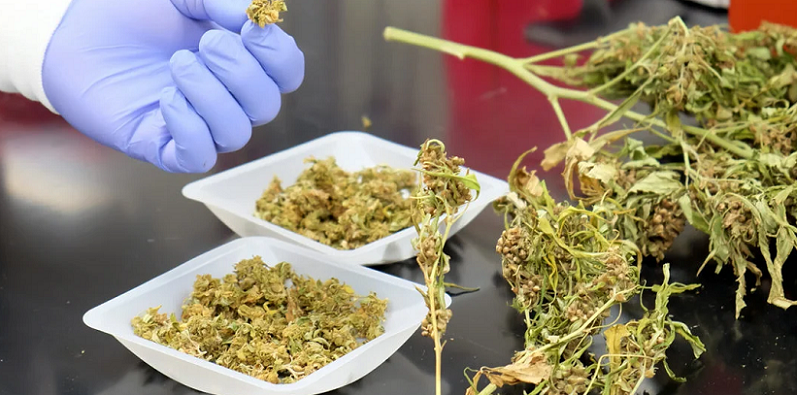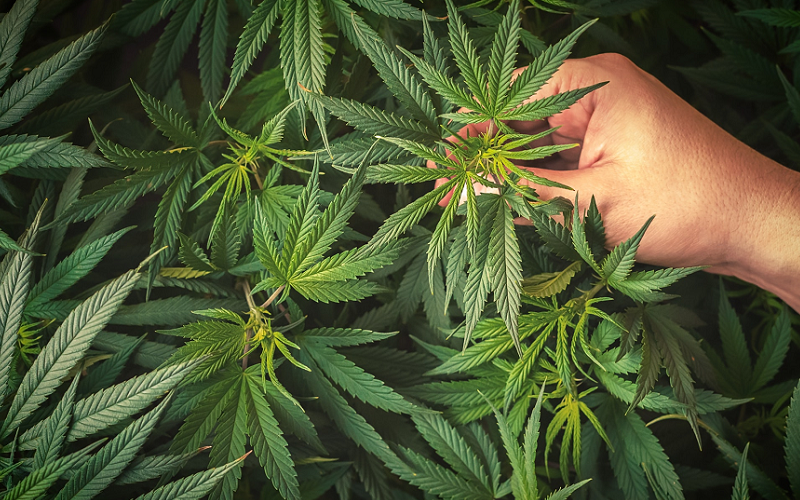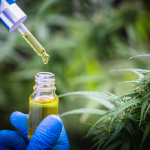Cannabis has long been recognized as a powerful medicinal plant, offering a myriad of healing properties that have been utilized for centuries. Modern science has now begun to uncover the secrets behind its effectiveness, revealing a complex array of compounds that contribute to its therapeutic benefits. Here we illuminate the fascinating science behind cannabis, focusing on its 100 natural healing compounds. By understanding these components and their interactions, we can appreciate the true potential of cannabis in modern medicine and its promising future in health and wellness.
Contents
History of Cannabis in Medicine
Cannabis has been used for medicinal purposes for thousands of years, with its healing properties celebrated across various cultures and epochs. The history of cannabis in medicine is rich and diverse, spanning from ancient traditional practices to its resurgence in modern therapeutic applications.
Ancient Uses Of Cannabis
In ancient times, cannabis was a staple in the pharmacopeias of many civilizations. Its versatility and effectiveness made it a go-to remedy for a variety of ailments.
Traditional Chinese Medicine
One of the earliest recorded uses of cannabis in medicine comes from ancient China. Around 2737 BCE, Emperor Shen Nong documented the use of cannabis in treating conditions such as gout, rheumatism, and malaria. The Chinese pharmacopeia, known as the “Pen Ts’ao Ching,” included cannabis as a vital component, highlighting its analgesic and anti-inflammatory properties.
Ayurvedic Practices
In India, cannabis held a significant place in Ayurvedic medicine. It was used to treat a wide range of disorders, from headaches and digestive issues to more severe conditions like epilepsy. The sacred texts of Ayurveda, which date back to around 1500 BCE, extolled cannabis for its ability to enhance mental clarity and induce relaxation, making it a revered plant in Indian healing traditions.
Cannabis In Modern Medicine
The journey of cannabis in modern medicine has been marked by both significant advances and periods of prohibition. Its medical potential has been rediscovered and validated through contemporary scientific research.
Early 20th Century Research
In the early 1900s, cannabis began to gain attention in Western medicine. Researchers isolated and identified cannabinoids, the active compounds in cannabis, leading to a deeper understanding of how these substances interact with the human body. Medical texts from this period document the use of cannabis extracts in treating pain, insomnia, and other conditions, indicating a growing acceptance of its therapeutic value.
Recent Scientific Studies
In recent decades, the legal landscape surrounding cannabis has shifted, allowing for more extensive scientific investigation. Modern research has confirmed many of the traditional uses of cannabis and uncovered new therapeutic applications. Studies have shown that cannabinoids can be effective in managing chronic pain, reducing inflammation, and alleviating symptoms of various neurological disorders. This resurgence of interest has paved the way for cannabis to re-enter mainstream medicine as a potent and versatile treatment option.
The Major Compounds in Cannabis
Cannabis contains a multitude of compounds that contribute to its medicinal properties. Among these, cannabinoids, terpenes, and flavonoids are the most significant. Understanding these major compounds helps in appreciating how cannabis can be utilized for therapeutic purposes.
Cannabinoids
Cannabinoids are the primary active compounds in cannabis, responsible for its wide range of effects. These compounds interact with the body’s endocannabinoid system, influencing various physiological processes.
THC (Tetrahydrocannabinol)
THC is perhaps the most well-known cannabinoid due to its psychoactive properties. It is the compound that produces the “high” associated with cannabis use. Beyond its recreational effects, THC has significant therapeutic potential.
Psychoactive Properties
THC binds to CB1 receptors in the brain, leading to alterations in mood, perception, and cognitive function. This interaction is what causes the psychoactive effects of cannabis.
Therapeutic Uses
THC is effective in pain management, helping to reduce chronic pain conditions. It also has antiemetic properties, making it useful in treating nausea and vomiting, particularly in patients undergoing chemotherapy. Additionally, THC can stimulate appetite, which is beneficial for individuals with conditions like HIV/AIDS or cancer [1].
CBD (Cannabidiol)
CBD is another major cannabinoid, known for its non-psychoactive nature. It does not produce a “high,” making it an attractive option for those seeking therapeutic benefits without psychoactive effects.
Non-Psychoactive Benefits
CBD has a calming effect on the nervous system. It can help reduce anxiety and stress, promoting a sense of relaxation and well-being.
Common Applications
CBD is widely used for its anti-inflammatory and analgesic properties. It is effective in treating conditions such as arthritis, multiple sclerosis, and chronic pain. CBD also shows promise in managing epilepsy and other neurological disorders, with research supporting its use in reducing the frequency and severity of seizures.
Terpenes
Terpenes are aromatic compounds found in many plants, including cannabis. They contribute to the plant’s scent and flavor and play a role in its therapeutic effects.
Myrcene
Myrcene is one of the most abundant terpenes in cannabis. It has a distinct earthy, musky aroma and several medicinal properties.
Sedative Effects
Myrcene is known for its sedative qualities, which can help in promoting sleep and relaxation. This makes it beneficial for individuals with insomnia or other sleep disorders.
Anti-Inflammatory Properties
Myrcene also has strong anti-inflammatory effects, aiding in the reduction of pain and swelling. This terpene is particularly useful in managing conditions such as arthritis and muscle pain.
Limonene
Limonene has a citrusy aroma and is commonly found in the rinds of citrus fruits. It offers various health benefits and therapeutic applications [2].
Mood Enhancement
Limonene is known for its uplifting and mood-enhancing effects. It can help alleviate symptoms of depression and anxiety by promoting a sense of well-being and positivity.
Anti-Anxiety Effects
This terpene also has anxiolytic properties, which can help reduce stress and anxiety levels. It is often used in aromatherapy for its calming and soothing effects.
Flavonoids
Flavonoids are compounds found in many fruits, vegetables, and cannabis. They contribute to the plant’s color and have various health benefits.
Cannflavins
Cannflavins are a group of flavonoids unique to cannabis. They possess potent anti-inflammatory properties.
Anti-Inflammatory Potential
Cannflavins have been shown to inhibit the production of pro-inflammatory molecules, making them effective in reducing inflammation. This can be particularly beneficial for conditions like arthritis and inflammatory bowel disease.
Antioxidant Benefits
Cannflavins also act as antioxidants, protecting cells from oxidative stress and damage. This can help in preventing chronic diseases and promoting overall health.

The Lesser-Known Cannabis Compounds and Their Benefits
Cannabis is not only composed of well-known compounds like THC and CBD but also contains a variety of lesser-known compounds that contribute to its therapeutic effects. These minor cannabinoids, terpenes, and flavonoids each offer unique benefits, enhancing the overall medicinal potential of the plant.
Minor Cannabinoids
While THC and CBD are the most prominent cannabinoids, minor cannabinoids also play significant roles in cannabis’s therapeutic properties. These compounds, though present in smaller quantities, offer unique benefits that complement the effects of the major cannabinoids [3].
CBG (Cannabigerol)
CBG is often referred to as the “mother of all cannabinoids” because it is the precursor to other cannabinoids, including THC and CBD.
Antibacterial Properties
CBG has shown strong antibacterial effects, making it a potential treatment for bacterial infections, including antibiotic-resistant strains like MRSA.
Neuroprotective Effects
Research indicates that CBG may have neuroprotective properties, which could be beneficial in treating neurodegenerative diseases such as Huntington’s disease and Parkinson’s disease.
CBC (Cannabichromene)
CBC is another minor cannabinoid with promising medicinal properties. It is non-psychoactive and works synergistically with other cannabinoids.
Pain Relief
CBC has been found to have analgesic properties, making it effective in reducing pain. It works by interacting with pain receptors and enhancing the pain-relieving effects of other cannabinoids.
Anti-Depressive Qualities
CBC also exhibits anti-depressive effects by increasing levels of anandamide, a neurotransmitter known as the “bliss molecule,” which helps regulate mood and emotion.
Additional Terpenes
Beyond the more common terpenes like myrcene and limonene, cannabis contains several other terpenes that contribute to its therapeutic profile.
Pinene
Pinene is one of the most widely distributed terpenes in nature, known for its pine-like aroma. It is found in many plants, including cannabis.
Respiratory Benefits
Pinene has bronchodilator properties, which can help improve airflow to the lungs. This makes it useful for individuals with respiratory conditions such as asthma.
Memory Improvement
Studies suggest that pinene may help enhance memory and cognitive function by inhibiting the breakdown of acetylcholine, a neurotransmitter involved in learning and memory.
Linalool
Linalool is a terpene with a floral scent, commonly found in lavender and other aromatic plants. It offers several therapeutic benefits.
Anti-Anxiety Effects
Linalool is known for its calming and anxiolytic properties, helping to reduce anxiety and promote relaxation. It is often used in aromatherapy for its soothing effects.
Pain Management
Linalool also has analgesic properties, making it effective in managing pain. It can enhance the pain-relieving effects of other cannabinoids and terpenes, contributing to overall pain relief.
Other Important Flavonoids
Flavonoids are phytonutrients found in many fruits and vegetables, including cannabis. They offer various health benefits and contribute to the plant’s therapeutic potential.
Quercetin
Quercetin is a flavonoid found in many fruits, vegetables, and grains. It has strong antioxidant and anti-inflammatory properties.
Antiviral Properties
Quercetin has been shown to have antiviral effects, helping to protect against a range of viral infections. It can inhibit the replication of viruses, making it a valuable compound for immune support.
Heart Health Support
Quercetin supports cardiovascular health by reducing inflammation, lowering blood pressure, and improving blood vessel function. It helps in maintaining overall heart health.
Kaempferol
Kaempferol is another flavonoid with significant health benefits. It is found in various fruits and vegetables and contributes to the therapeutic effects of cannabis.
Cancer Prevention
Kaempferol has been studied for its potential anti-cancer properties. It can induce apoptosis (programmed cell death) in cancer cells and inhibit their proliferation, making it a promising compound in cancer prevention and treatment.
Anti-Inflammatory Benefits
Kaempferol also exhibits strong anti-inflammatory effects, helping to reduce chronic inflammation and associated health issues. It supports overall well-being by mitigating inflammatory responses in the body.
How Cannabis Compounds Work Together: The Entourage Effect
The therapeutic benefits of cannabis are not solely due to individual compounds but also result from the complex interactions between these compounds. This synergistic relationship, known as the entourage effect, enhances the overall efficacy of cannabis.
Definition And Explanation Of The Entourage Effect
The entourage effect describes how various compounds in cannabis, including cannabinoids, terpenes, and flavonoids, work together to produce enhanced therapeutic effects. This synergy means that the combined effect of these compounds is greater than the sum of their individual effects [4].
The concept was first introduced by researchers who observed that whole-plant extracts often had more significant therapeutic benefits than isolated compounds. This phenomenon underscores the importance of using full-spectrum cannabis products to achieve optimal health outcomes.
Synergistic Benefits Of Combined Compounds
The interplay between different cannabis compounds can enhance their individual effects and create new therapeutic potentials.
THC And CBD Interaction
THC and CBD are the most studied cannabinoids and provide an excellent example of the entourage effect. While THC is known for its psychoactive effects, CBD can modulate these effects, reducing the potential for anxiety and paranoia. Together, they offer balanced pain relief and anti-inflammatory benefits without the intense psychoactive experience that THC alone might produce.
Terpene and Cannabinoid Synergy
Terpenes, with their aromatic properties, also interact with cannabinoids to enhance their effects. For instance, myrcene increases the permeability of cell membranes, allowing more THC to enter the brain, thus intensifying its effects. Similarly, limonene can enhance the mood-lifting properties of CBD, providing a more pronounced anti-anxiety effect.
Flavonoids Contribution
Flavonoids, though less discussed, play a crucial role in the entourage effect. They can enhance the anti-inflammatory and antioxidant properties of cannabinoids and terpenes. For example, cannflavins have been shown to work with CBD to provide robust anti-inflammatory effects, which are more significant than when either compound is used alone.
Case Studies And Research Supporting The Entourage Effect
Numerous studies have supported the existence and benefits of the entourage effect in cannabis therapy.
Chronic Pain Management
Research has shown that patients suffering from chronic pain conditions, such as fibromyalgia and arthritis, experience better relief with full-spectrum cannabis extracts compared to isolated THC or CBD. These studies highlight how the combination of cannabinoids and terpenes provides superior pain management and improves quality of life.
Epilepsy Treatment
In treating epilepsy, especially in drug-resistant cases, full-spectrum CBD extracts have been more effective than pure CBD isolates. The presence of small amounts of THC and other cannabinoids enhances the anticonvulsant properties of CBD, reducing the frequency and severity of seizures more effectively.
Anxiety and Depression
Patients with anxiety and depression have also reported better outcomes with full-spectrum cannabis products. The combination of CBD, THC, and terpenes like linalool and limonene provides a balanced approach to managing symptoms, offering both immediate relief and long-term benefits.
References
[1] Cannabis and the Brain
[2] Cannabis, a complex plant: different compounds and different effects on individuals
[3] The science of cannabis, a work in progress
[4] Cannabis (Marijuana) and Cannabinoids: What You Need To Know






